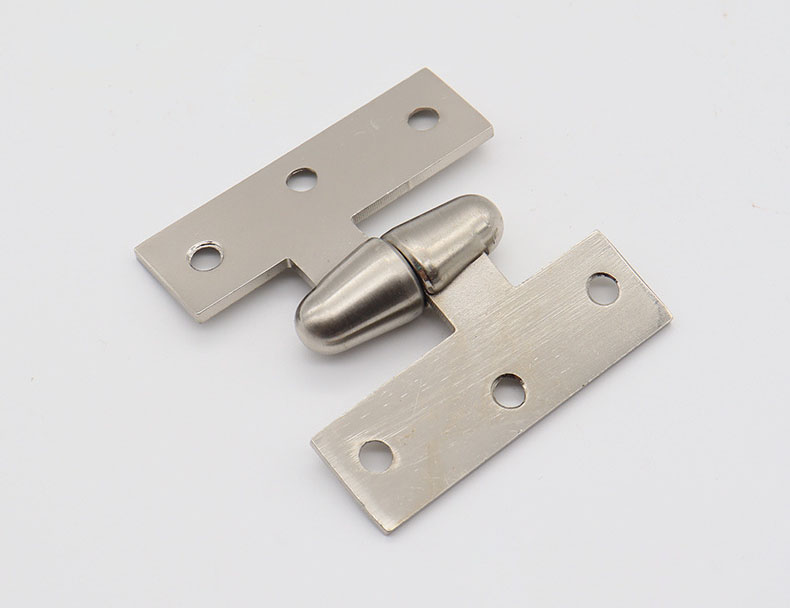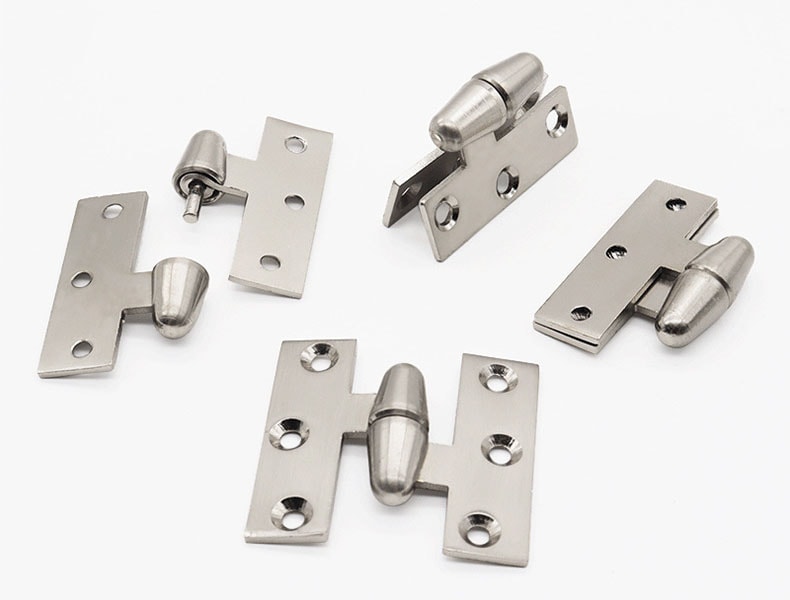When embarking on any construction or design project, understanding the small details can often lead to the most significant improvements in both functionality and aesthetics.
Knuckle hinges are a type of mechanical bearing that connects two solid objects, typically allowing only a limited angle of rotation between them. They are characterized by their cylindrical sections, known as “knuckles,” through which a pin is inserted to hold the hinge together. This design not only provides robust support and durability for heavy doors and lids but also adds an aesthetic element to the hinge’s appearance, making it suitable for both functional and decorative applications.
In this post, we’ll delve into the intricacies of knuckle hinges, exploring their design, functionality, benefits, applications, and how they compare to other hinge types.

The Anatomy of a Knuckle Hinge
A knuckle hinge is more than just a means to connect two pieces of material; it’s a sophisticated mechanical design that balances form with function. Consisting of a series of interconnected loops or “knuckles” that form a barrel, this hinge type allows for the smooth and controlled movement of doors, lids, or panels. The hinge pin runs through the center of the barrel, securing the knuckles of both hinge leaves together, enabling them to pivot smoothly around the pin.
This design not only contributes to the hinge’s strength and durability but also to its aesthetic appeal. The visible knuckles can be designed in various styles and finishes, making them an interesting architectural detail in their own right. Additionally, the configuration of the knuckle hinge allows for easy maintenance and repair. Pins can often be removed and replaced if necessary, extending the lifespan of the hinge and, by extension, the door or panel it supports.
Functionality and Benefits
The functionality of a knuckle hinge is a key factor in its widespread use. Its design allows for a wide range of movement, typically up to 180 degrees, making it ideal for applications requiring full access or visibility. This flexibility is crucial in settings like cabinetry, entry doors, and industrial access panels, where ease of use and reliability are paramount.
Moreover, the robust construction of knuckle hinges makes them suitable for heavy-duty applications. The interlocking knuckles distribute weight and stress more evenly than other hinge designs, reducing wear and tear over time. This durability ensures that doors and panels remain functional and secure, even under frequent use or in harsh environments. Additionally, the aesthetic versatility of knuckle hinges can complement any design style, from traditional to contemporary, adding both functionality and charm.

Applications and Versatility
Knuckle hinges find their place in a wide array of settings, highlighting their versatility and adaptability. From residential doors to industrial machinery, these hinges are selected for their combination of strength, aesthetics, and ease of maintenance. In homes, they might be found on entry doors, where their durability and design contribute to both security and curb appeal. In commercial and industrial contexts, knuckle hinges are often used on heavy gates and access panels, where their robust construction ensures longevity and reliability.
This versatility extends to custom applications as well, where hinges may be tailored to meet specific requirements or aesthetic goals. Whether it’s a particular finish to match hardware or a custom size for a unique piece of furniture, knuckle hinges can be adapted to suit a wide range of design needs.
Comparison with Other Hinges
While there are many types of hinges available, each with its own set of advantages, knuckle hinges stand out for their unique blend of functionality, durability, and design flexibility. Unlike butt hinges, which are more common but offer a simpler design, knuckle hinges provide additional strength and a distinctive aesthetic. Compared to concealed hinges, which hide the mechanism from view, knuckle hinges make a feature of their design, contributing to the overall look of the door or cabinet.
Furthermore, the ease of maintenance and repair of knuckle hinges is a significant advantage over other types. Being able to replace the hinge pin without disassembling the entire hinge or door is a convenience that can save time and money in the long run.
Conclusion
Knuckle hinges represent a fusion of design, durability, and functionality that can enhance a wide range of applications. Whether you’re designing a new home, refurbishing a piece of furniture, or specifying hardware for industrial use, considering the type of hinge to use is crucial. Knuckle hinges offer a solution that combines aesthetic appeal with the strength and versatility needed to meet the demands of almost any project.
You may be interested:
- How to Adjust Walk-In Cooler Door Hinges?
- What Are the Characteristics of Industrial CE Marked Hinges?
- Can You Cut Piano Hinges?
- What’s the Best Hinges For Heavy Doors?







